Picture Of The Day - November 18, 2019

Picture of the day - November 18, 2019
Surface of a dim an dusty moon.
More Posts from Sharkspaceengine and Others

Picture of the Day - January 24, 2019
Desert world and it's large moon.

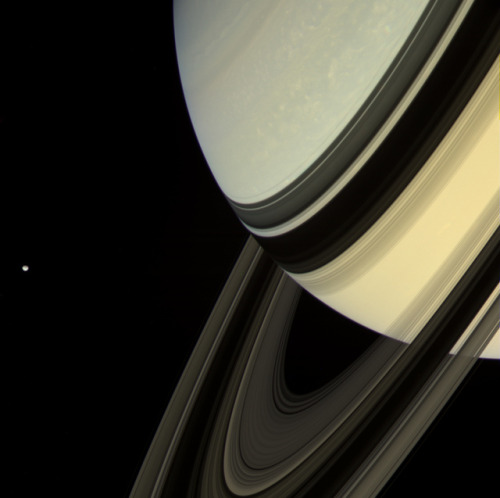






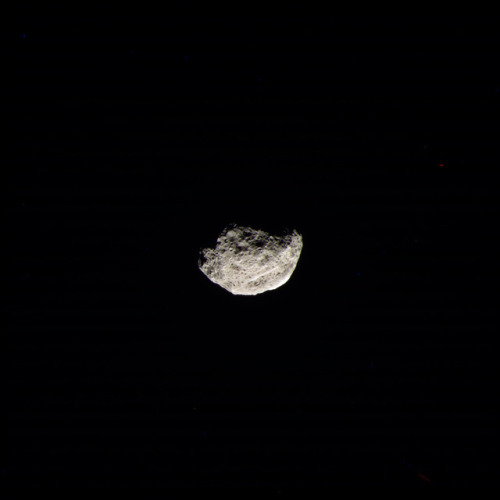

Saturn, rings and moons
NASA/JPL-Caltech/SSI/Kevin M. Gill





Triangulum Log - Blue Veil System - Post 3 (Lunar Skies)
Many of the system’s gas giants have large satellites with significant atmosphere’s. Here are some of the best views of the skies of these moons.
High Resolution Pics
Image 1 - The Great Eye in the sky
Image 2 - Double Sunset
Image 3 - Lunar Desert
Image 4 - Tranquility
Image 5 - Cold Distant Giant
I know there’s a lot of tension after Tumblr’s new policy annouced for December 17th, but reblog this if you aren’t leaving Tumblr so that other blogs can know they aren’t going to be completely alone!

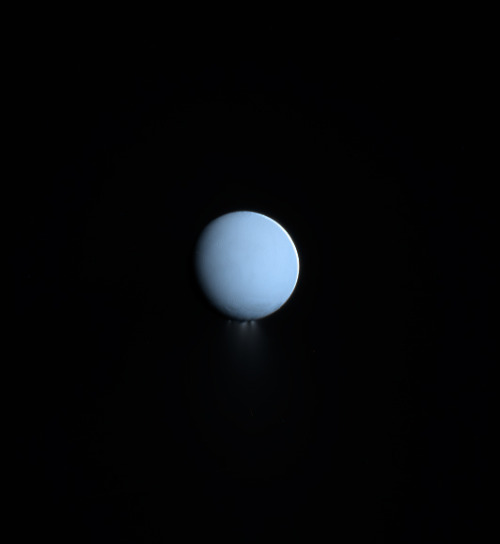



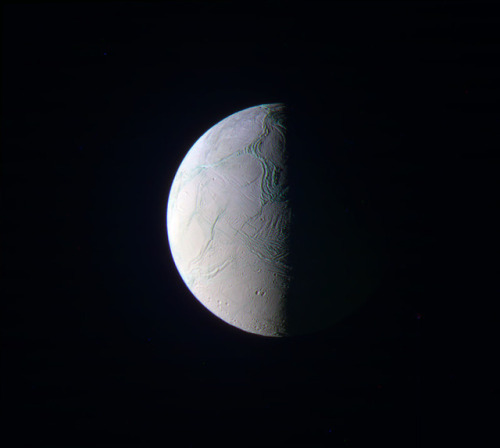

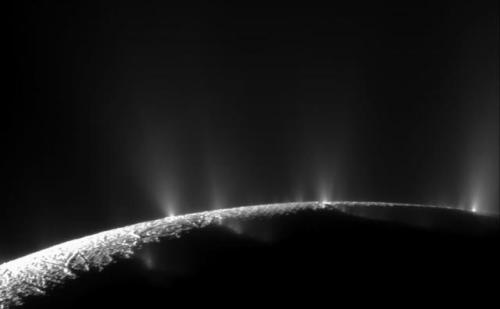

Enceladus
Enceladus is one of the major inner moons of Saturn along with Dione, Tethys, and Mimas. It orbits Saturn at a distance of 148,000 miles (238,000 km), falling between the orbits of Mimas and Tethys. It is tidally locked with Saturn, keeping the same face toward the planet. It completes one orbit every 32.9 hours within the densest part of Saturn’s E Ring, the outermost of its major rings, and is its main source.
Enceladus is, like many moons in the extensive systems of the giant planets, trapped in an orbital resonance. Its resonance with Dione excites its orbital eccentricity, which is damped by tidal forces, tidally heating its interior, and possibly driving the geological activity.
Enceladus is Saturn’s sixth largest moon, only 157 miles (252 km) in mean radius, but it’s one of the most scientifically compelling bodies in our solar system. Hydrothermal vents spew water vapor and ice particles from an underground ocean beneath the icy crust of Enceladus. This plume of material includes organic compounds, volatile gases, carbon dioxide, carbon monoxide, salts and silica.
With its global ocean, unique chemistry and internal heat, Enceladus has become a promising lead in our search for worlds where life could exist.

In 2005, Cassini’s multiple instruments discovered that this icy outpost is gushing water vapor geysers out to a distance of three times the radius of Enceladus. The icy water particles are roughly one ten-thousandth of an inch, or about the width of a human hair. The particles and gas escape the surface at jet speed at approximately 800 miles per hour (400 meters per second). The eruptions appear to be continuous, refreshing the surface and generating an enormous halo of fine ice dust around Enceladus, which supplies material to one of Saturn’s rings, the E-ring.
Several gases, including water vapor, carbon dioxide, methane, perhaps a little ammonia and either carbon monoxide or nitrogen gas make up the gaseous envelope of the plume.
Read more at: solarsystem.nasa.gov
Image credit: NASA/JPL/Cassini & Kevin Gill






Triangulum Log - Post 4 - Vista System (Planet 2)
Here we come across the system’s second planet, a warm desert world. This rocky world orbits 0.41 AU from the sun and has a mass roughly one fifth that of Earth. It is a hot world covered in a thin Carbon Dioxide/ Sulfur Dioxide atmosphere with one tenth the atmospheric pressure of Earth. The planet is tidally locked to the sun and has an average surface temperature of 231° F on the day-side.
High Resolution Pics
Image 1
Image 2
Image 3
Image 4
Image 5
Image 6





Pictures of the day - December 5, 2018
I apologize for my lack pictures yesterday.
Insight B System - Fourth Planet - Insight B-V
The fifth planet orbiting Insight B is a terrestrial-like planet roughly one quarter the mass of earth (0.27 Earth Masses) and 80% of Earth’s radius (5,093.84 km). It is predominately rocky world with a significant water content in its mantle, surrounded by a thin Carbon Dioxide atmosphere.
The surface is cold with an average temperature of -159 F, and an atmospheric pressure of 0.11 atmospheres. A single small spherical satellite orbits the planet. One day lasts approximately 23 hours 38 mins. Insight B-V orbits its sun at an average distance of 0.97 AU, completing an orbit once every 1.163 Earth Years. The planet is notable for having a retrograde rotation, orbiting almost on its side with an axial tilt of 104°. Considering the planet orbits between two gas giants, the extreme tilt is to be expected.
High Resolution Pictures
Insight B-V
Small Moon
Closeup
Day-time sky
Sunset
-
 xddddddddddddddedo liked this · 6 years ago
xddddddddddddddedo liked this · 6 years ago -
 sharkspaceengine reblogged this · 6 years ago
sharkspaceengine reblogged this · 6 years ago
My Space Engine Adventures, also any space related topic or news. www.spaceengine.org to download space engine. The game is free by the way. Please feel free to ask me anything, provide suggestions on systems to visit or post any space related topic.Check out my other blog https://bunsandsharks.tumblr.com for rabbit and shark blog.
294 posts









